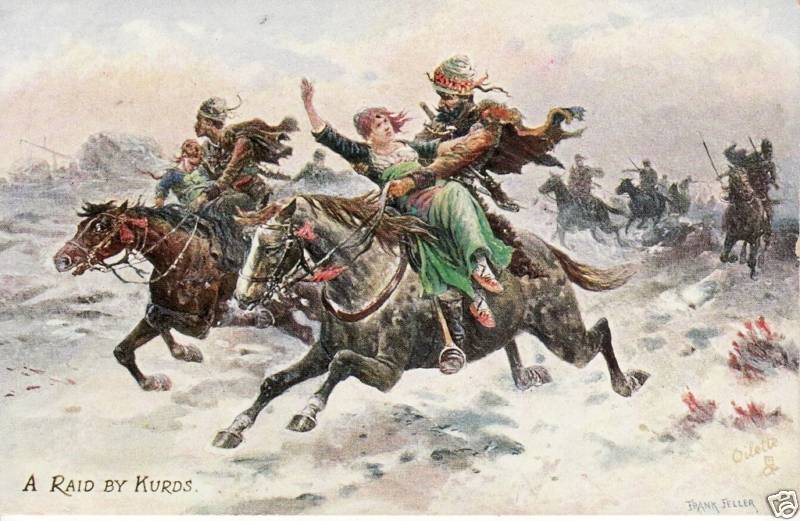Bride-Kidnapping and Feminism

Author: Haitham Aldafari
Bride kidnapping is one of the internationally known traditions in Kyrgyzstan and its surroundings. It is considered to be against the internationally recognized feminist rules as well as it is also considered as an inhuman activity. On the official grounds, Bride kidnapping is considered as a crime but still, because of a number of factors the officials mostly don’t react against the kidnappers as the common public as well as the officials have accepted it in the name of culture, tradition, and heritage. In the cases, where the bride doesn’t accept her husband, the officials are only able to help the women to get free of the masculine society. The bride kidnapping is illegal in Kyrgyzstan and according to the figure one-third of the bride kidnapping are without mutual clearance and consensual. It is rarely seen that the kidnappers could be prosecuted for the act. The main aim of the paper is to discuss Bride kidnapping in Kyrgyzstan, its history, effects on feminist’s world and human nature, as well as the social and political consequences on the new generation.
Bride kidnapping is a part of human culture. The history of bride kidnapping goes back to 19th century but it didn’t become much popular because of the Soviet Union. The tradition strengthened its roots among the native communities after the end of Russian control which was after the 1940s and 1950s. Bride kidnapping is one of the main causes of child and forceful marriages which result in the unsatisfactory lifestyle (Nixon and Owusu 2017). In an international survey, only because of the acceptance of the bride kidnapping culture, Kyrgyzstan has faced a lot many incidents of kidnapping without the bride’s will. Almost 40 girls are kidnapped in every minute, which counts to be more than eleven thousand females being kidnapped for the purpose of ostensive marriage. Countless women have claimed that they are forced to live a life which they didn’t deserve, or they didn’t want at all. In Kyrgyzstan, more than half of the marriages were observed to be stolen. More than 90% of the women ended up the kidnapping in marrying the kidnapper as they were not left by any choice (Werner 2009).
The start of this tradition’s causes included the poverty as the main factor. There is a practice of dowry all over the Asian countries and due to the bride kidnapping, the boy’s family gets unnecessary wealth exchange as well while kidnapping the girl. 22% of the people have been responded to the surveys that the major factor behind the bride kidnapping is the economic gain. There are more the 50% of the people who have discussed that they have to perform the bride kidnapping because of the “love on first sight”, fear of rejection or a bet among the friends. An old couple has explained the tradition in a positive way that before the kidnapping they knew each other and have exchanged the love letters. The current way of bride kidnapping is different and unacceptable (Kleinbach and Aitieva 2005). The young people aggressively and violently kidnap the women and it is against the tradition.
In Kyrgyzstan, bride kidnapping is known as “Ala Kachuu” and it is highly practiced in the rural areas because of lack of the law enforcement and proper timely prosecution. There are a number of local NGOs as well as government departments which are acting against this tradition. They have gained a good influence on the native families and the concept of bride kidnapping is reduced in the new generation by education and proper schooling. The teachers explain the disadvantages to the young generation about the bride kidnapping concept and its disadvantages which causes a positive grooming against the bride kidnapping concept so that in the future this issue could be resolved completely (Kleinbach and Aitieva 2005). There is an outnumbered case discussed in which the female young adults and teenagers are living their lives happily but suddenly because of the kidnapping and lack of confidence on the social acceptance after the incident, they have to accept the new life by marrying the kidnapper. In many urban areas as well as some rural villages, “Ala Kachuu” is completely banned and the girls are protected from it so that they would be able to safely complete their education, grow in their career and make their life according to their choices.
There is a recent example of a girl who suffered from “Ala Kachuu” in which she and her two friends at the age of twenty-one, were returning back to home (Handrahan 2004). They were unable to recognize the three adults chasing them. As they were separated, the three men dragged them into the car and drove them to their residences. Nobody was there at that moment and the girls were screaming, crying, cursing, and even hitting them but they didn’t step back for a moment. Officially this practice is illegal since 1994 but still, there are thousands of girls who are suffering from this problem. It is true that many marriages continue among happy couples but there are many cases in which the conditions of the women are miserable in which they are not comfortable with their husbands and are psychologically not feeling well. There are several cases in which if a girl faces the kidnapping incident, its family doesn’t accept her in any case as she is now been treated in a wrong way and has spent time with a stranger.
The laws are against the bride kidnapping and in detail, the country has confirmed that the bride kidnapping is not allowed at all. Almost more than 5000 bride kidnapping incidents suffered a huge female population. There is no loyalty considered in this approach to the woman and she is forcefully agreed for the marriage. The cultural traditions of the area are highly strong, and they are not allowing the victims to reach the officials because of a number of ways. The parents after the incident don’t support their young child and leave her in the hands of the kidnapper. The people and the relatives offend this act but don’t stop their boys from acting as kidnappers (Handrahan 2000). The marriage of the girls of age sixteen to seventeen is considered as legally approved with the consent of the local authorities as well as the government but if the girl is under the age of 16 and is kidnapped for the purpose of marriage, it is considered as the law offense and serious consequences would be faced to the kidnappers, parents or the people involved in this marriage. The government since 1994, didn’t plan to finally end the practice of bride kidnapping acts on serious problematic areas where the effects are severe (Molchanova et al. 2017). The authorities handle the bride kidnapping cases by understanding its seriousness and the cases in which the problem could be minimized by the mutual discussion of the partners, the government and officials try to stay away from them. The UN Population Fund recently published that only 14% of the women were married in the past at very young age.
The police officials didn’t accept many reports which resulted in the loss of confidence of victims from the authorities. Due to the number of incidents increased in all over the country and even young boys have started to practice the bride kidnapping which resulted in the strict law enforcement (Amsler and Kleinbach 1999). The kidnappers would have to face 10 years of imprisonment upon the act of kidnapping a girl for marriage. Since the law is stricter but still the reporting and complaining are not increased as well as the practice of kidnapping is still the same. There are many social strengths which help the groom to perform the kidnapping act. Mostly the families use this act as a tradition after the arrangements of the wedding in which the groom is provided all the facilities including a car, passage and time to escape with the bride. The groom’s home is decorated for the new bride. The groom’s parents arrange dinner and celebrations as well as pray for the good future of the couple. The tradition of bride kidnapping is considered as an essential norm of the society which is misused and mistreated in many different ways by the strangers and other people of the society (Amsler and Kleinbach 1999).
It is very rarely observed that the men who were engaged in the kidnapping were punished or were convicted because of their crime (Amsler and Kleinbach 1999). The girls have no confidence in getting back their parents support after the kidnapping which results in the acceptance of the man who kidnapped them. This tradition is also used as a way to rape the girls of different ages. If the numbers could be studied, there were only 15 convictions in 2006 and after the strictness of the law, only 25 convictions were observed among more than 11000 attempts of bride kidnapping (Werner 2009). The problems created because of the kidnapping and rape were the increase in the suicide attempts. Among the three kidnapping and suicide cases, only one man was sentenced to just six years of imprisonment. Since there is no exemption of the punishment if the victim points out the kidnappers. There are outnumbered examples of the bride kidnapping in which the cases which got the popularity after several numbers of years included the women photographed by a photographer while she was being kidnapped (Kleinbach and Aitieva 2005). Farida was the girl at that time and after the kidnapping, she was kept in a home of the man where old women tried to convince her for accepting the marriage proposal. She refuses the proposal by explaining that she had a boyfriend. She calls her brother who after a successful debate with the kidnapper’s family takes his sister to home. After a couple of days, she gets married to her original boyfriend.
There is another example of a girl named Aitilek, who was a student and was living her life happily (Werner 2009). At the time of her marriage, she was wearing the white scarf and was sitting behind the curtains as a symbol of marriage. After the kidnapping, she was convinced to marry Baktiyaf and with him, she travelled out of the city. She didn’t know the destiny as there was no landline and was a completely remote area with rarely occupied (Kleinbach and Aitieva 2005). There are many examples of the bride kidnapping in which the kidnapping resulted in the divorce as well. The UN and local NGOs have analyzed that there were outnumbered women who ended the kidnapping of getting the divorce. Almost 60% of the forceful kidnapping cases ended in divorce, some in suicide and very less in happy marriage life. One student who just started her medical education was kidnapped on her way from school to home (Nixon and Owusu 2017). She was married to the kidnapper. After some days of marriage and kidnapping, she left her husband’s home and continued her medical education. She has aimed to become a doctor rather than a prisoner of her husband.
In the discussion of the bride kidnapping in context of the feminism, the feminists inside as well as outside the country are completely against this action and want the government to act strictly against these actions. The feminists have a concept that the women are as free as men and have the equal rights to freely make the choices of their lives instead of being pushed or forced by men (Handrahan 2004). Due to the rise of feminism in all over the world, the women were liberalized, and all the world happily accepted it. The western women for the first time at the start of the 20th century started working in the industry. They gained a positive freedom way which helped them to grow in different fields of life. They were given equal rights as the men secured in the industry and job sector. Kyrgyzstan before that time very recently developed the culture of bride kidnapping which is now a problematic issue for all over the country because of the lack of knowledge about the original practice of the tradition and lack of education among the young men. The women of the country are highly educated and their lifestyle is quite modernized in the urban areas but still in many parts of the country, the bride kidnapping is practiced highly which snatches the right of the women to choose their husband or the lifestyle they have dreamed (Ilkkaracan 2002). Bride kidnapping is considered as a crime but still, it is highly practiced in all over the country. The ancient beliefs say that this tradition is highly precious and should be understood before practicing. Currently, the violent way of practicing of this tradition have caused suffrage to a lot number of women and some men as well. The men have to face imprisonment and the women have to start a new life with a disturbed style (Kleinbach and Salimjanova 2007). The best way of practicing is after the mutual understanding. In this way, both would be able to start their life happily. This practice could not be implemented purely so it’s better for the people to remove it completely from their traditions and to use the internationally approved social ways to marry. In this way the women would have the freedom to live happily and the men would also have the good way to convince the women as it is happening in all over the world to achieve the purpose of marriage.
In a nutshell, it can be explained that the bride kidnapping is a tradition practiced in the central Asian country, Kyrgyzstan. This tradition was started in the 19th century. The main practice includes a man picks his selected bride from her home and takes her to his own home where the family waits for the new member of their family. The misuse of the tradition is highly practiced in the country as well as in some outside areas of the country. The men are practicing this tradition in a violent way. They grab the girls in the cars and keep them and convince them for marriage so that there would be no chance for the girls to refuse. The law enforcement is not actively implementing the law against the tradition. It caused a great problem of the lack of trust and inability to defend the women from this practice. This topic is highly discussed on the feminist approaches where the feminists are highly against the bride kidnapping. The women are unable to complain about their right against this tradition. The violent behavior of men is appreciated by the society which causes women to secure themselves inside their homes rather than to work outside.
References
Amsler, S., & Kleinbach, R. 1999. “Bride Kidnapping in The Kyrgyz Republic”. International Journal of Central Asian Studies 4(4), 185-216.
Borbieva, N. O. N. 2012. “Kidnapping Women: Discourses of Emotion And
Social Change in The Kyrgyz Republic”. Anthropological Quarterly 85(1):
141-169.
Handrahan, L. M. 2000. Implications of International Human Rights Law And Bride Kidnapping In Kyrgyzstan”. Praxis: The Fletcher Journal Of
Development Studies 16(3): 1-13.
Handrahan, L. 2004. “Hunting for Women: Bride-Kidnapping In Kyrgyzstan”. International Feminist Journal of Politics 6(2): 207-233.
Ilkkaracan, P. 2002. “Women, Sexuality, And Social Change in The Middle
East and The Maghreb”. Social Research 753-779.
Kleinbach, R., and Salimjanova, L. 2007. “Kyz Ala Kachuu And Adat: Non
Consensual Bride Kidnapping and Tradition in Kyrgyzstan”. Central Asian
Survey 26(2): 217-233.
Kleinbach, R., Ablezova, M., & Aitieva, M. 2005. Kidnapping for Marriage (Ala Kachuu) In A Kyrgyz Village”. Central Asian Survey 24(2): 191-202.
Molchanova, E., Horne, S., Kim, E., & Yarova, O. 2017. “Hybridized
Indigenous Healing in The Kyrgyz Republic: Helping Survivors of
Violence”. Women & Therapy 1-14.
Nixon, R., & Owusu, F. 2017. “Choice, Inclusion, And Access to Information:
Understanding Female Farmers’ Participation In Kyrgyzstan’s Water-User
Associations”. Sustainability 9(12): 2346.
Werner, C. 2009. “Bride Abduction In Post‐Soviet Central Asia: Marking A
Shift Towards Patriarchy Through Local Discourses of Shame And
Tradition”. Journal of The Royal Anthropological Institute 15(2): 314-331.







Responses